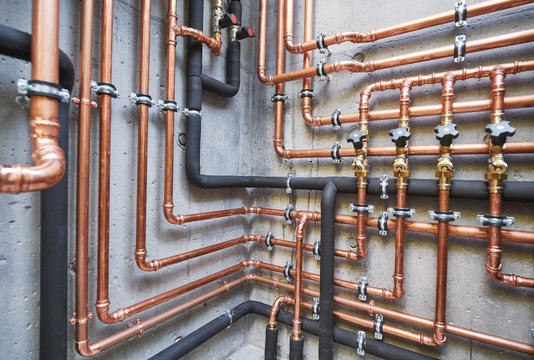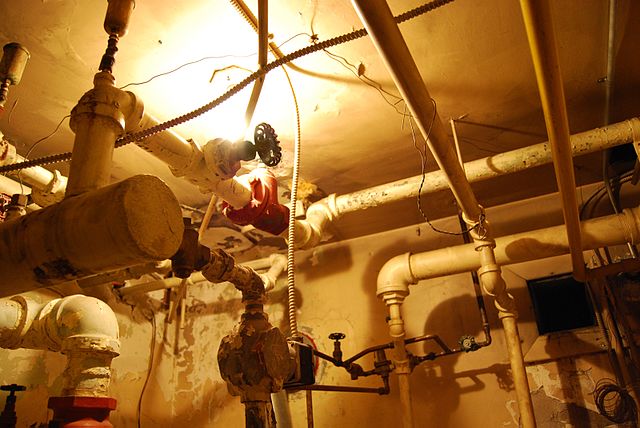The Complete Look at Your Home's Plumbing System Anatomy
The Complete Look at Your Home's Plumbing System Anatomy
Blog Article
What're your concepts on Plumbing Installation 101: All You Need to Know?

Comprehending how your home's plumbing system works is important for every house owner. From providing clean water for drinking, cooking, and bathing to safely removing wastewater, a well-maintained plumbing system is essential for your family's wellness and convenience. In this thorough overview, we'll check out the elaborate network that makes up your home's pipes and offer tips on upkeep, upgrades, and taking care of usual problems.
Introduction
Your home's plumbing system is greater than simply a network of pipelines; it's a complicated system that ensures you have accessibility to tidy water and effective wastewater removal. Knowing its elements and exactly how they work together can aid you avoid pricey fixings and make sure whatever runs smoothly.
Standard Parts of a Plumbing System
Pipelines and Tubes
At the heart of your plumbing system are the pipelines and tubes that bring water throughout your home. These can be made of numerous materials such as copper, PVC, or PEX, each with its advantages in regards to toughness and cost-effectiveness.
Fixtures: Sinks, Toilets, Showers, etc.
Components like sinks, bathrooms, showers, and bath tubs are where water is utilized in your home. Recognizing how these components connect to the pipes system assists in diagnosing issues and intending upgrades.
Valves and Shut-off Points
Shutoffs control the circulation of water in your pipes system. Shut-off valves are crucial during emergencies or when you require to make repairs, permitting you to isolate parts of the system without interfering with water flow to the whole home.
Water Supply System
Key Water Line
The main water line attaches your home to the municipal water system or a private well. It's where water enters your home and is dispersed to various components.
Water Meter and Stress Regulator
The water meter actions your water usage, while a stress regulator makes sure that water flows at a risk-free stress throughout your home's plumbing system, protecting against damage to pipelines and fixtures.
Cold Water vs. Warm water Lines
Recognizing the distinction in between cold water lines, which supply water directly from the major, and hot water lines, which bring warmed water from the water heater, aids in troubleshooting and preparing for upgrades.
Water drainage System
Drain Pipeline and Traps
Drain pipelines lug wastewater away from sinks, showers, and bathrooms to the sewage system or sewage-disposal tank. Traps protect against sewage system gases from entering your home and also catch particles that could trigger obstructions.
Ventilation Pipes
Air flow pipelines allow air into the water drainage system, preventing suction that might slow drain and create catches to empty. Appropriate ventilation is vital for keeping the integrity of your plumbing system.
Value of Correct Drainage
Guaranteeing appropriate water drainage prevents backups and water damage. Routinely cleaning up drains pipes and keeping traps can avoid expensive repair services and expand the life of your pipes system.
Water Heating System
Types of Water Heaters
Water heaters can be tankless or standard tank-style. Tankless heating units warm water on demand, while storage tanks keep warmed water for prompt usage.
Updating Your Pipes System
Factors for Upgrading
Upgrading to water-efficient fixtures or replacing old pipes can improve water quality, lower water bills, and increase the value of your home.
Modern Plumbing Technologies and Their Benefits
Explore technologies like smart leak detectors, water-saving commodes, and energy-efficient hot water heater that can conserve cash and lower ecological influence.
Price Factors To Consider and ROI
Compute the ahead of time expenses versus long-lasting cost savings when considering plumbing upgrades. Many upgrades pay for themselves with minimized utility bills and less fixings.
Just How Water Heaters Attach to the Pipes System
Comprehending just how water heaters attach to both the cold water supply and warm water distribution lines assists in identifying problems like insufficient hot water or leakages.
Upkeep Tips for Water Heaters
On a regular basis flushing your water heater to remove debris, examining the temperature level settings, and inspecting for leakages can expand its life expectancy and boost power effectiveness.
Common Pipes Problems
Leaks and Their Reasons
Leakages can happen due to maturing pipelines, loose fittings, or high water stress. Attending to leaks promptly protects against water damage and mold and mildew development.
Clogs and Clogs
Obstructions in drains and toilets are commonly caused by purging non-flushable products or a buildup of oil and hair. Utilizing drain displays and being mindful of what goes down your drains pipes can avoid blockages.
Signs of Pipes Issues to Watch For
Low tide pressure, slow-moving drains, foul odors, or abnormally high water expenses are signs of possible pipes problems that need to be dealt with promptly.
Pipes Maintenance Tips
Routine Inspections and Checks
Set up annual pipes evaluations to capture issues early. Try to find indicators of leaks, deterioration, or mineral accumulation in faucets and showerheads.
Do It Yourself Upkeep Tasks
Basic jobs like cleaning tap aerators, looking for bathroom leakages utilizing color tablets, or protecting exposed pipes in cool climates can stop significant plumbing issues.
When to Call an Expert Plumber
Know when a plumbing concern requires expert expertise. Attempting intricate repair work without correct knowledge can result in even more damage and higher repair service prices.
Tips for Reducing Water Usage
Basic routines like taking care of leakages promptly, taking much shorter showers, and running full tons of washing and dishes can conserve water and reduced your energy costs.
Eco-Friendly Pipes Options
Consider lasting pipes materials like bamboo for flooring, which is durable and environment-friendly, or recycled glass for kitchen counters.
Emergency situation Preparedness
Steps to Take During a Pipes Emergency situation
Know where your shut-off shutoffs are located and how to shut off the water in case of a ruptured pipe or major leak.
Significance of Having Emergency Situation Calls Convenient
Maintain call information for local plumbings or emergency situation solutions conveniently offered for fast feedback during a plumbing crisis.
Environmental Effect and Conservation
Water-Saving Fixtures and Home Appliances
Setting up low-flow faucets, showerheads, and bathrooms can substantially minimize water use without giving up efficiency.
Do It Yourself Emergency Situation Fixes (When Relevant).
Short-lived solutions like making use of air duct tape to spot a dripping pipeline or putting a container under a leaking tap can lessen damage up until an expert plumbing arrives.
Conclusion.
Understanding the makeup of your home's pipes system equips you to preserve it efficiently, saving time and money on fixings. By complying with routine maintenance routines and staying educated concerning modern-day pipes modern technologies, you can guarantee your plumbing system operates efficiently for years ahead.
The Anatomy of Your Home s Plumbing System
Understanding the anatomy of your home s plumbing system is essential for any homeowner. It not only helps in identifying potential issues but also facilitates effective communication with professionals when repairs or upgrades are needed. Your home s plumbing system is more than just pipes and faucets; it s a complex network that ensures the efficient and hygienic flow of water in and out of your house. In this blog, we ll dissect the crucial components of your home s plumbing system. For those in Antelope Valley, Brock Plumbing is your trusted partner for all your plumbing needs, ensuring your system functions smoothly and efficiently.
Water Supply System
Main Water Line: This is where your home s plumbing system begins. The main water line connects your home to the public water supply or a private well. Pipes and Shut-off Valves: Pipes distribute water throughout your home. Shut-off valves are crucial for controlling the flow of water and making repairs without shutting off the entire system. Drainage System
Drain Pipes: These pipes carry waste and water away from sinks, toilets, and showers. Vents: Vents allow sewer gases to escape and help maintain proper pressure in the drainage pipes, ensuring efficient flow of wastewater. Traps: Every fixture has a trap, a U-shaped pipe that holds water and prevents sewer gases from entering your home. The most common is the P-trap under sinks. Fixtures and Appliances
Fixtures and appliances are the most interacted with parts of your plumbing system. They include sinks, toilets, showers, dishwashers, and washing machines. Each fixture and appliance has its own supply and drainage connection, ensuring they receive clean water and can dispose of wastewater effectively.
Water Heating System
Your water heater is a crucial component, providing hot water to various fixtures and appliances in your home. It can be tank-based or tankless, with each type having its own set of advantages and maintenance requirements. Regular maintenance is essential to ensure efficient operation and extend the lifespan of the unit.
Sump Pump
In areas prone to flooding or with high water tables, a sump pump is an essential part of the plumbing system. It s installed in the lowest part of your basement or crawlspace and pumps out water that accumulates, preventing flooding and protecting your home from water damage.
Septic System
Homes that are not connected to a municipal sewer system have a septic system and an underground wastewater treatment structure. Understanding how to maintain your septic system is crucial to prevent backups, odors, and early system failure.
Conclusion
Your home s plumbing system is a complex and essential network, ensuring the efficient and hygienic flow of water in and out of your property. Understanding its key components helps in maintaining it properly and identifying issues before they escalate into major problems. For residents in Antelope Valley, Brock Plumbing is dedicated to providing top-notch services, ensuring that every part of your plumbing system is in perfect working order. Trust our team of professionals to handle all your plumbing needs, ensuring your home remains comfortable, safe, and well-maintained.
https://brockplumbinganddrains.com/blog/the-anatomy-of-your-homes-plumbing-system/

Hopefully you liked our piece about Exploring Your Homes Plumbing Anatomy. Thanks a lot for taking a few minutes to read through our article post. Make sure you set aside a second to promote this post if you liked it. Thanks for your time. Return soon.
Book Service Now Report this page